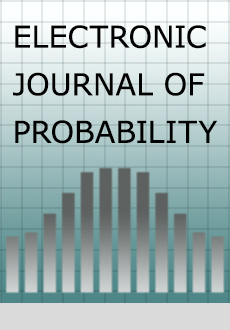Abstract
Abstract. We discuss scaling limits of large bipartite quadrangulations of positive genus. For a given $g$, we consider, for every positive integer $n$, a random quadrangulation $q_n$ uniformly distributed over the set of all rooted bipartite quadrangulations of genus $g$ with $n$ faces. We view it as a metric space by endowing its set of vertices with the graph distance. We show that, as $n$ tends to infinity, this metric space, with distances rescaled by the factor $n$ to the power of $-1/4$, converges in distribution, at least along some subsequence, toward a limiting random metric space. This convergence holds in the sense of the Gromov-Hausdorff topology on compact metric spaces. We show that, regardless of the choice of the subsequence, the Hausdorff dimension of the limiting space is almost surely equal to $4$. Our main tool is a bijection introduced by Chapuy, Marcus, and Schaeffer between the quadrangulations we consider and objects they call well-labeled $g$-trees. An important part of our study consists in determining the scaling limits of the latter.
Citation
Jérémie Bettinelli. "Scaling Limits for Random Quadrangulations of Positive Genus." Electron. J. Probab. 15 1594 - 1644, 2010. https://doi.org/10.1214/EJP.v15-810
Information





